drawing 3d and 4d images on the computer
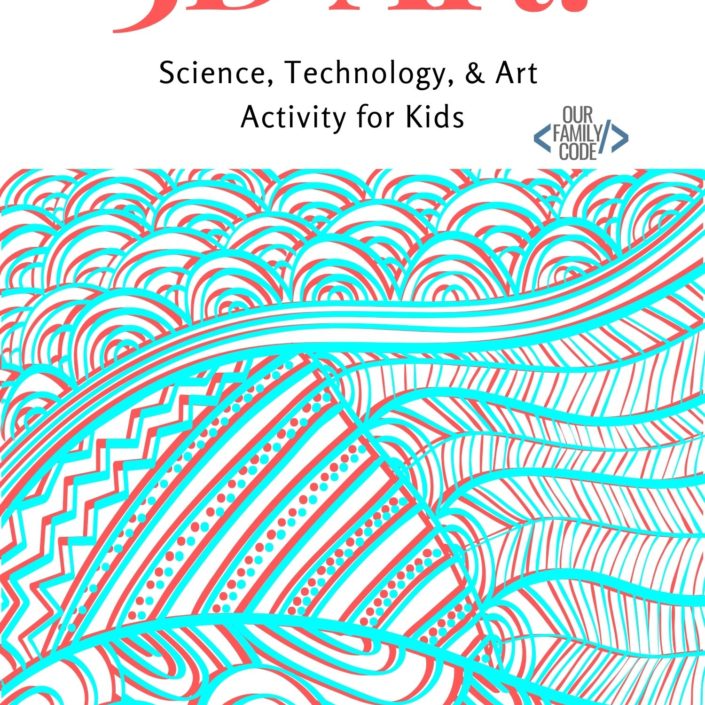
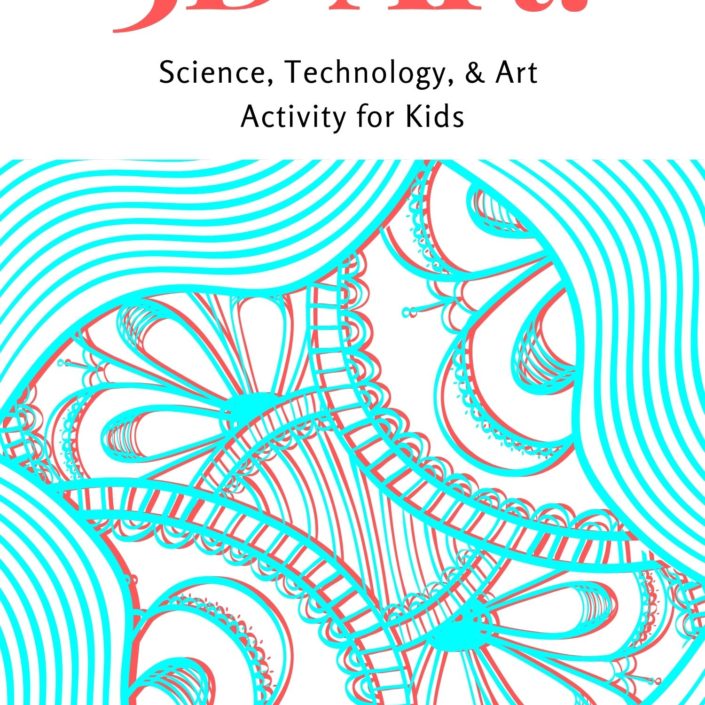
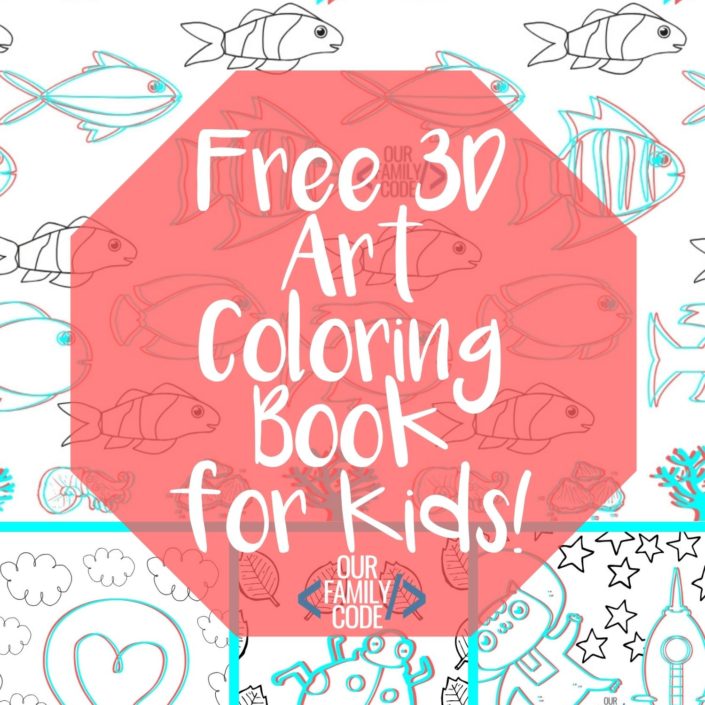
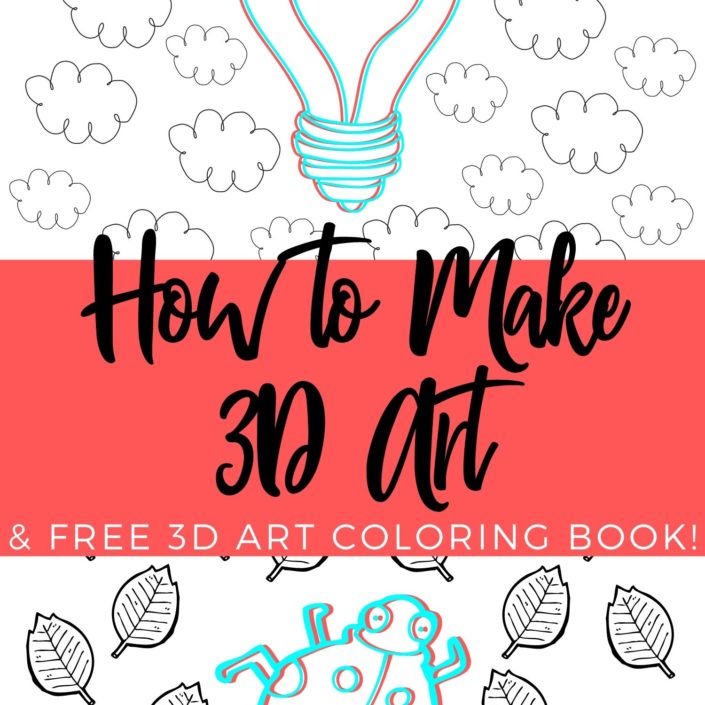
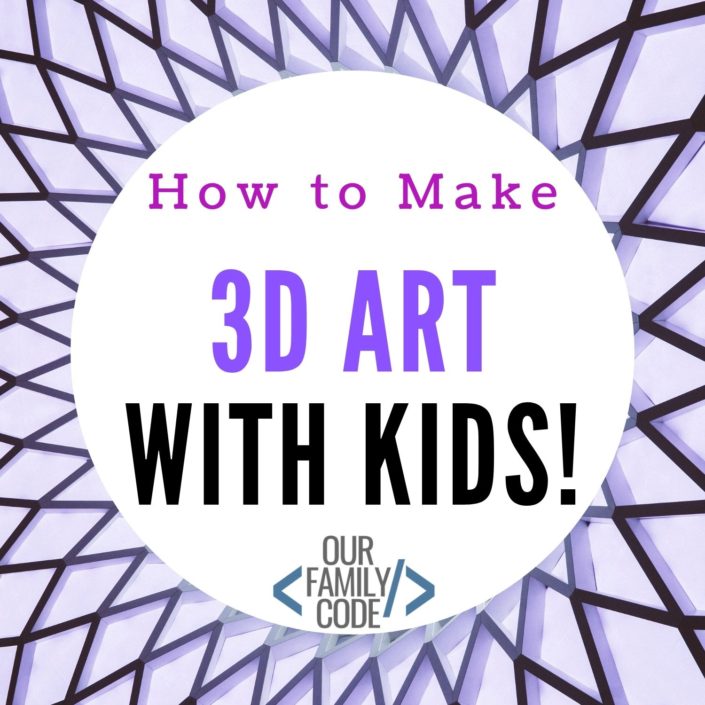
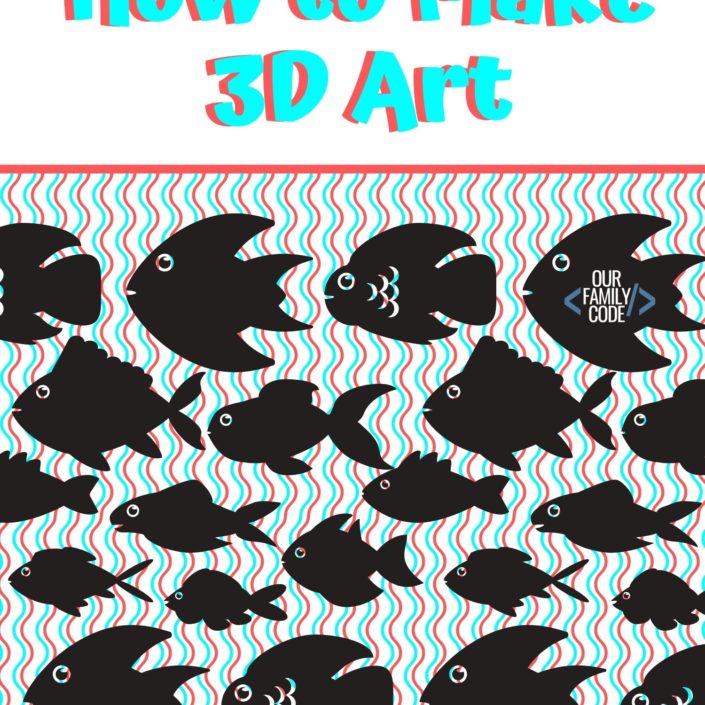
Acquire how to draw 3D images and make anaglyph artwork and catch some free 3D art worksheets to learn how to draw red and blue 3D!
This 3D art activity is then much fun! I love when art meets engineering and this activeness includes the best of both worlds.
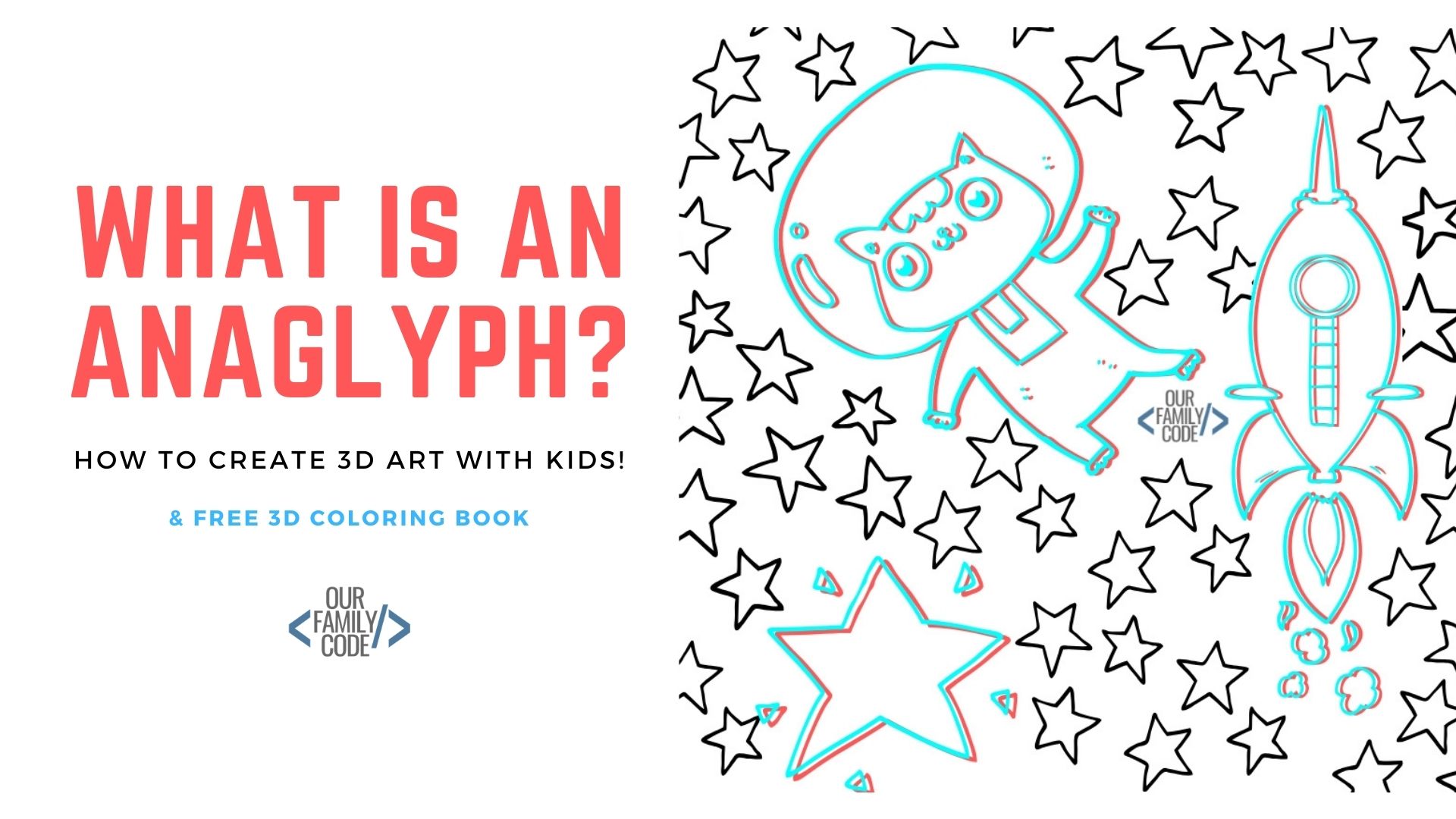
I'thousand a huge fan of perception activities. I fifty-fifty won 3rd place in the city scientific discipline fair when I was in high school for my perception experiment where I gathered oodles of data to find correlations between social circles, didactics, and upbringing with how we perceive external stimuli like images!
3D illusion cartoon is really easy to make and super fun to see the final results.
I had to boot Charlotte off her coloring but to get her to become to bed this evening because she was having also much fun! I like to think that alone is a job well done since she is my hardest kiddo to engage for projects similar these.
The total 3D art action includes using computer photography programs, which might be improve suited for kids in late simple and middle school. Don't stress though!
I turned my 5th grader into a Grand-3, 3D fine art coloring volume maker while nosotros waited at dance grade this afternoon! You tin snag the total coloring book at the stop of the post and everyone tin can bring together in on the technology side of this 3D art STEAM action!
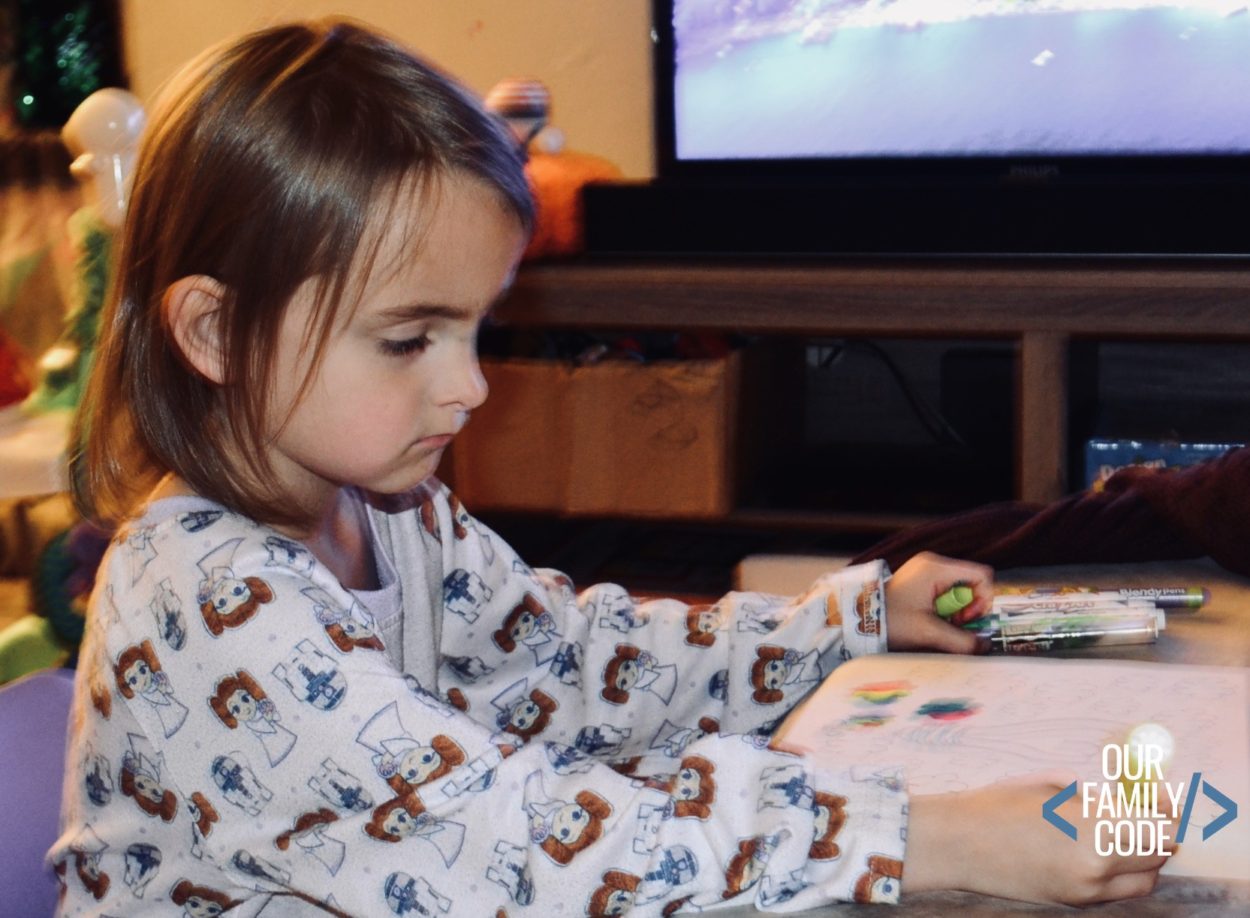
This post contains affiliate links. As an Amazon Associate, Our Family Code earns from qualifying purchases. Please encounter our Disclosure Policy for more than details.
Why STEAM Activities?
STEAM is the abbreviation for Scientific discipline, Engineering, Engineering, Art, and Math.
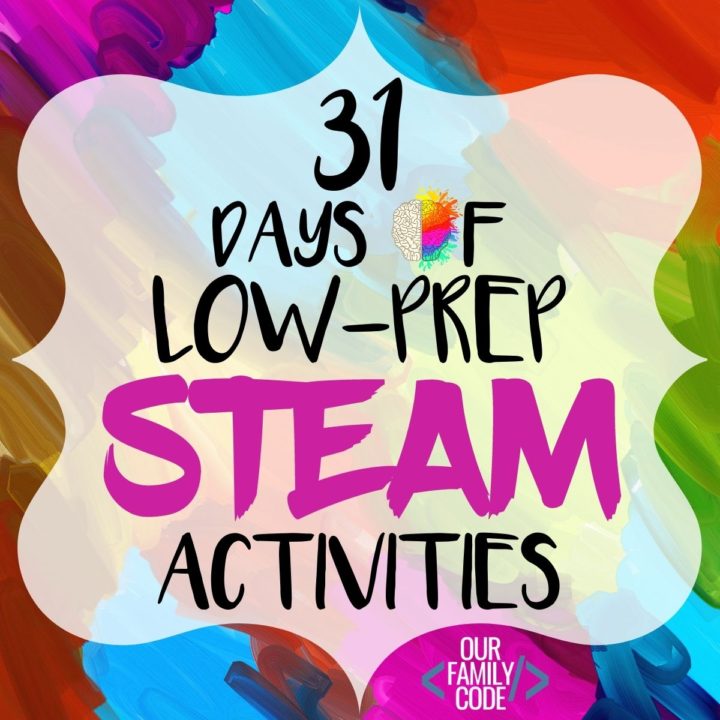
STEAM, like STEM, is an integrated arroyo to learning that encourages learners to make connections between the concepts they are learning and how they apply them to real-globe problems.
STEAM helps students inquire questions, problem solve, recall creatively, and produce innovative solutions. Many schools have adopted STEAM learning activities into their curriculum, but information technology'south never too early to kickoff building critical thinking skills.
We love to learn through play at our house and accept a nail doing activities for toddlers all the way to tweens!
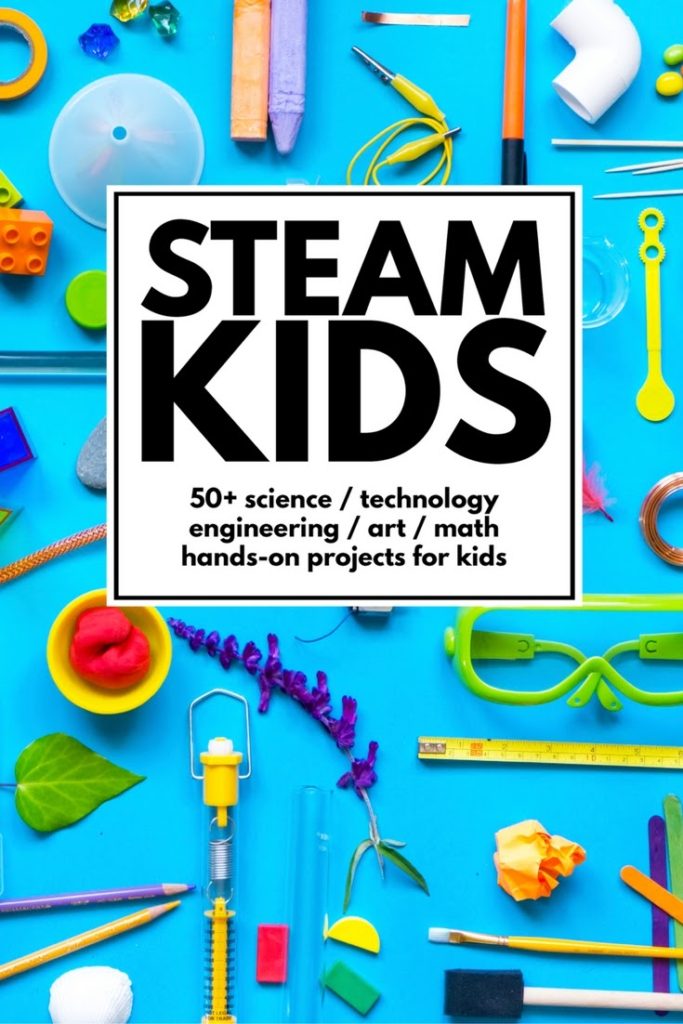
Key 3D Activity Terms
- Stereoscopic vision – a single perception of a slightly different epitome from each eye that aids in depth perception
- Anaglyph –the name given to the stereoscopic 3D effect achieved by using different filters to reveal ii slightly different images for each centre.
3D Drawings & Anaglyphs for Kids Materials
- 3D glasses with red and blue lens (Nosotros used our Learning Resource colour mixing glasses.)
- Blank pieces of paper
- Different shades of red & blue colored pencils or crayons (these ruddy/blueish colored pencils are an easy purchase for a large group!)
- Light board (optional)
- Pencil
- Clipboard
How to Create 3D Drawings & Anaglyphs for Kids
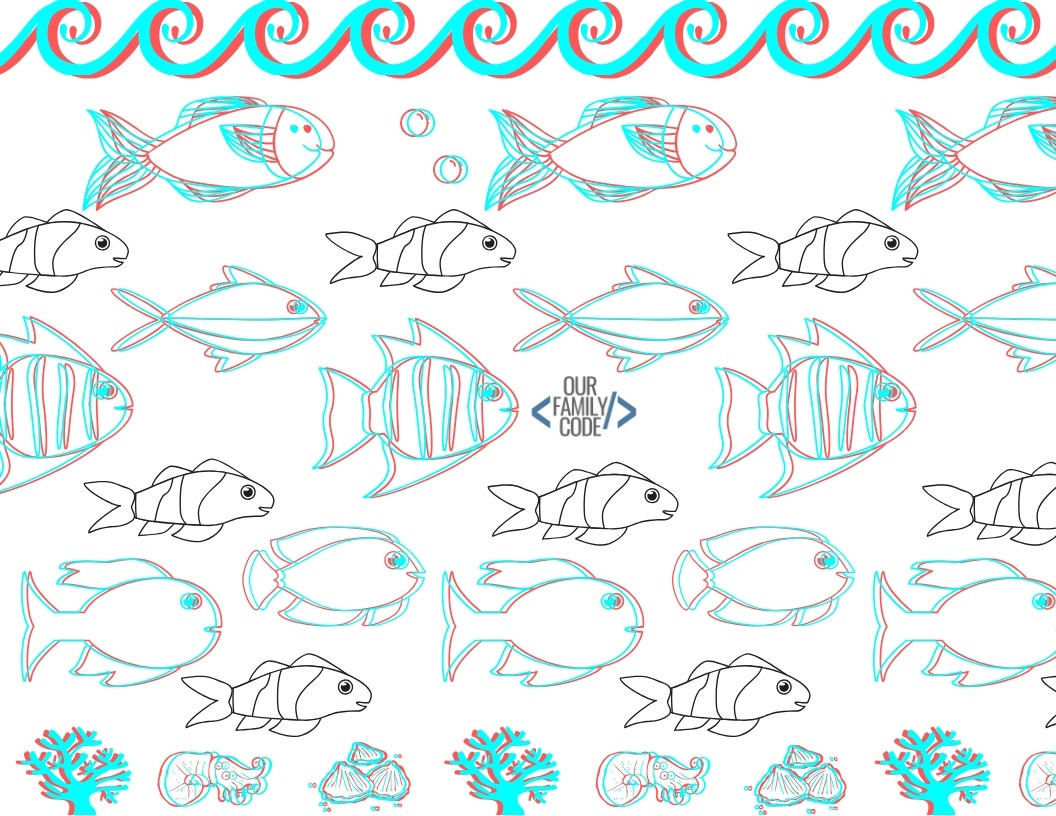
Use Ruby Pencil to Trace Your Drawing
Apply scratch paper to make small lines with your red colored pencils, markers, and crayons. The red must completely disappear when you concur upwards your red lens to your lines and it must turn night when y'all hold the blue lens to the red lines.
Use Blue Pencil to Trace Your Drawing
Repeat the process for your blue colored pencils, markers, and crayons. The bluish must disappear when you hold up your blue lens to your lines and it must plow dark when you hold the cherry-red lens to the blue lines.
Utilise merely the colors that piece of work. Your 3D image will not work if your colors aren't right.
The blueish that worked for us is a cyan and a red. We tested colored pencils, crayons, and markers and found that the colored pencils generated the best results for us.

3D Paradigm Exploration
Depict an epitome in pencil or marker on your newspaper. We printed an image and then used a light board to trace our paradigm onto a slice of newspaper with our red colored pencil.
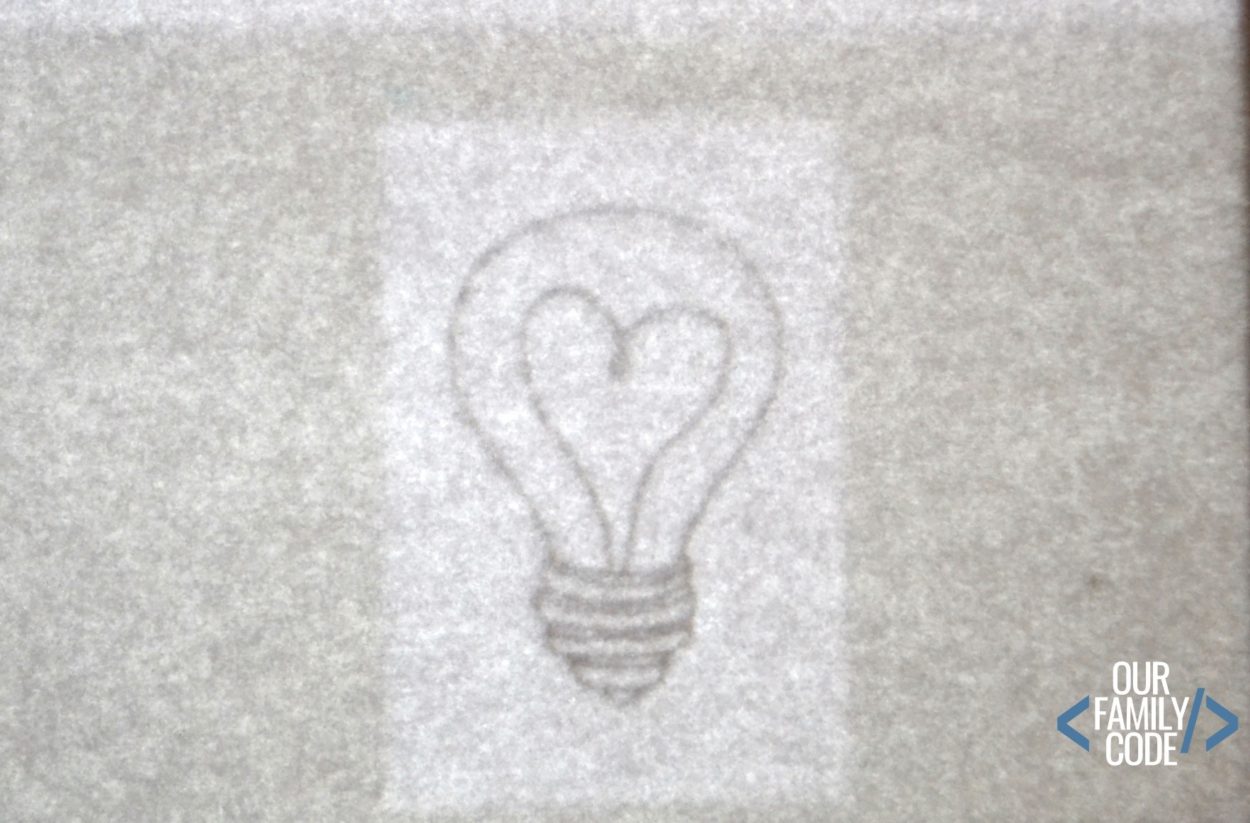
If you are drawing an epitome on a piece of paper, brand sure to trace it with a black marker. Place a blank sheet of paper over your epitome and trace it with a ruby-red colored pencil/crayon/mark.
Understanding the Motion picture Plane
Shift your newspaper over to the left or right based on whether you want that prototype to appear on the front of your picture show plane or the dorsum of your flick plane.
The further y'all shift horizontally, the more that image will appear in front or behind the airplane. Be sure not to shift it too far otherwise it will non work.
We decided to keep our lines close as we practiced in order to get really defined 3D images.
Then, apply a clipboard to hold our images in place while we traced with our bluish colored pencil. The trick is to brand sure to be every bit shut to the original as possible for the all-time 3D image.
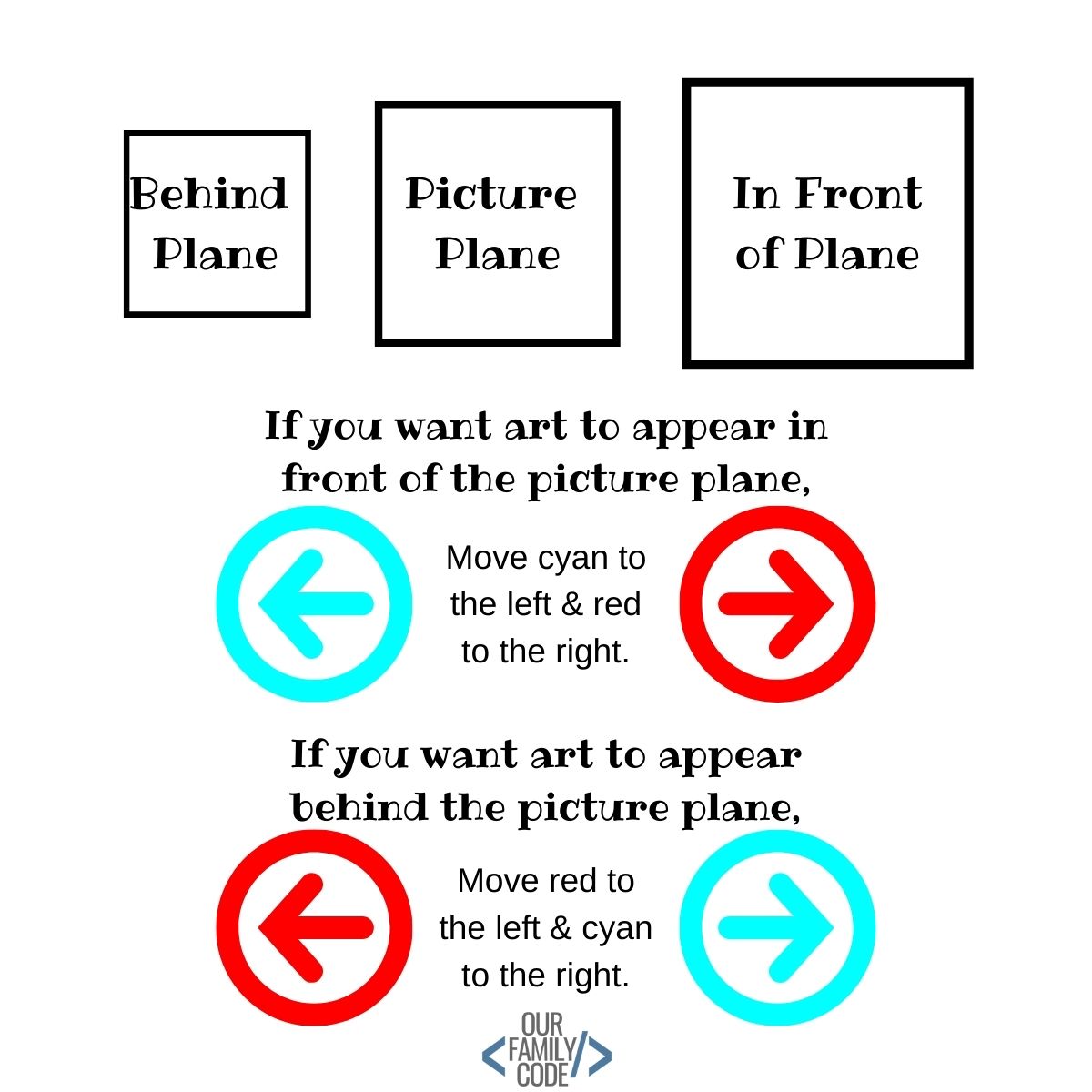
Project Tip: Your ruddy and blue trace marks must be as shut to identical every bit possible to brand the best 3D fine art! Use a clipboard to hold your paper in place and a ruler to shift your art more precisely.
Use your 3D spectacles to check out your 3D fine art! If you are having trouble seeing information technology, endeavor taking a step dorsum until you can run across the image more clearly.
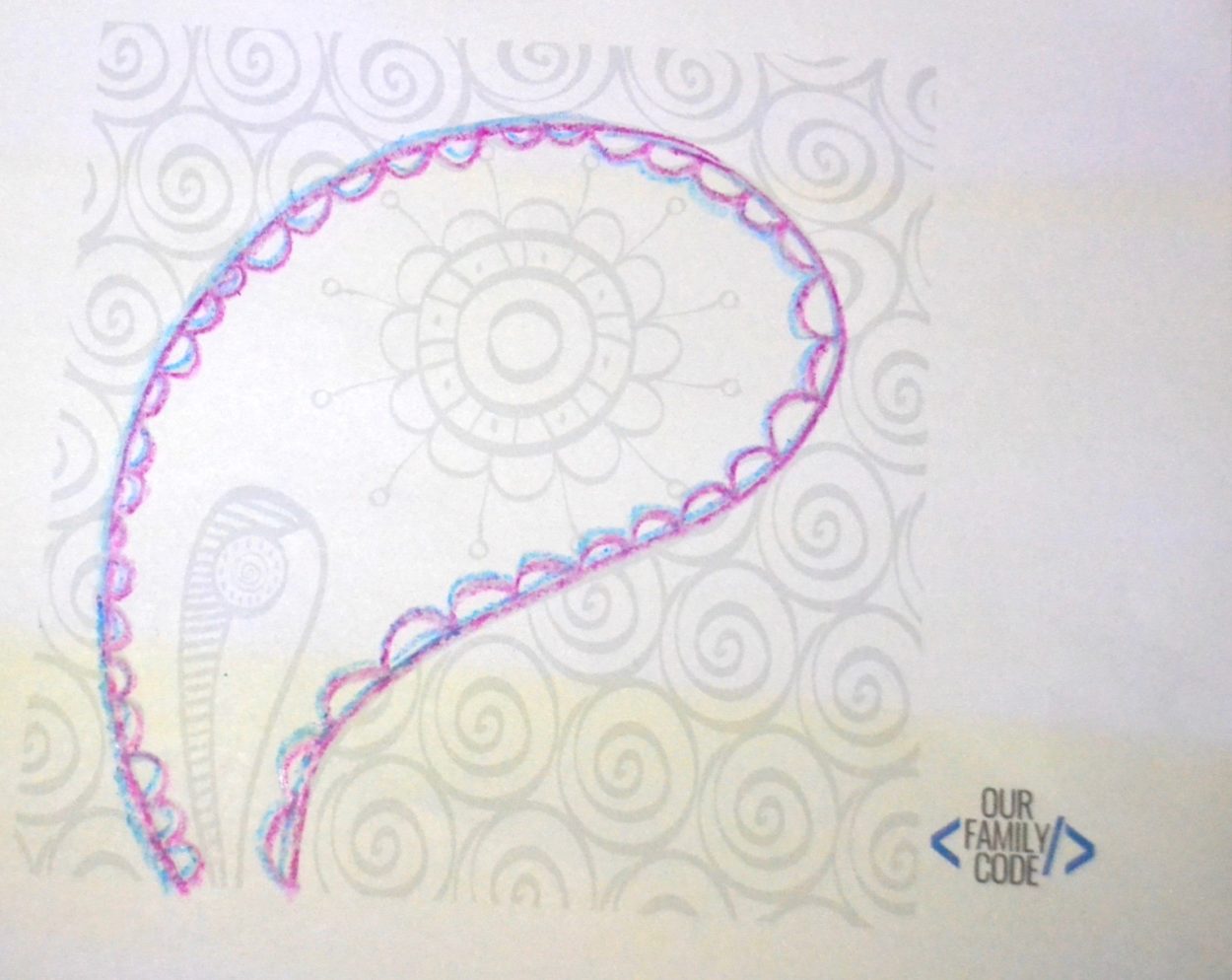
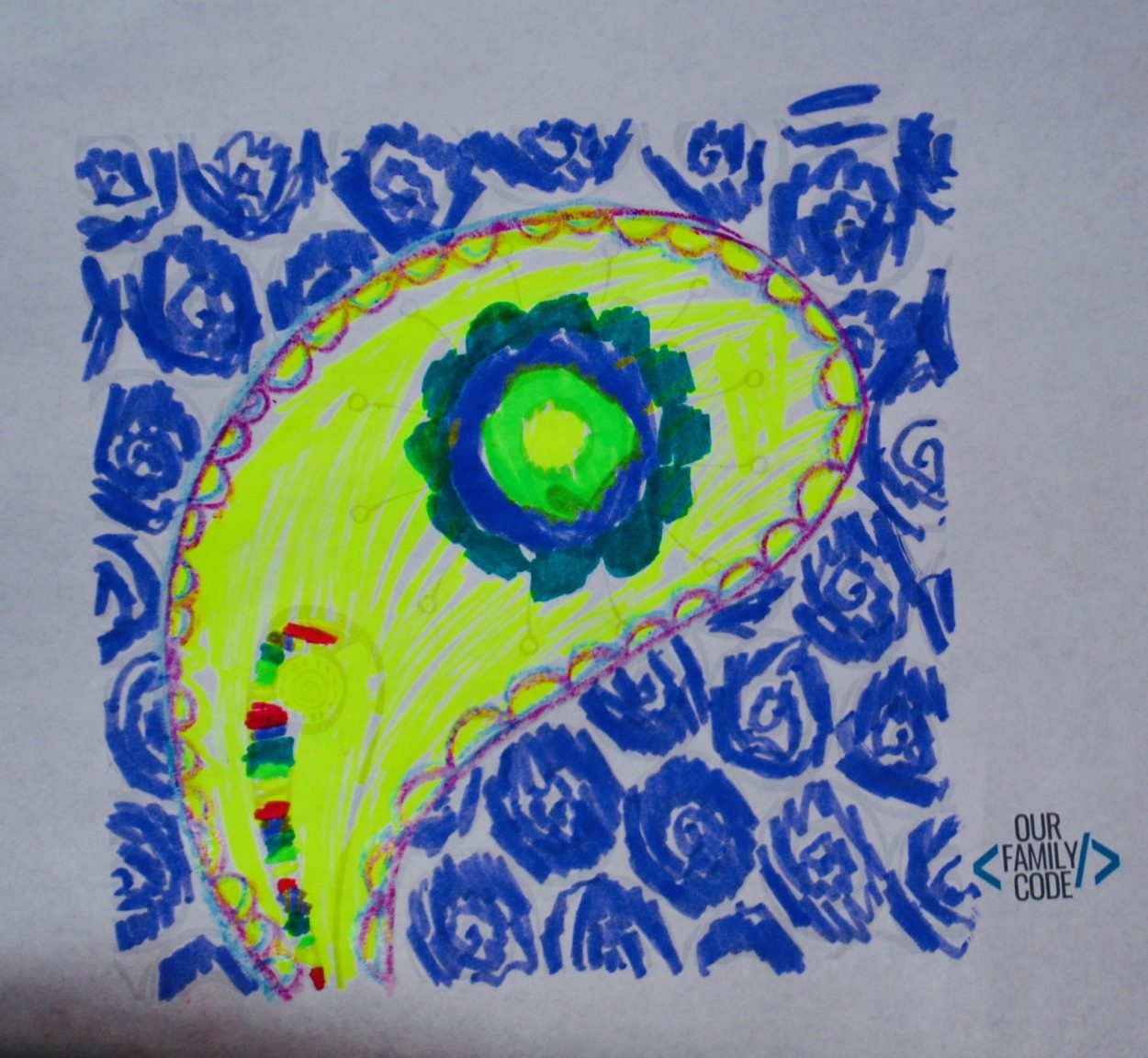
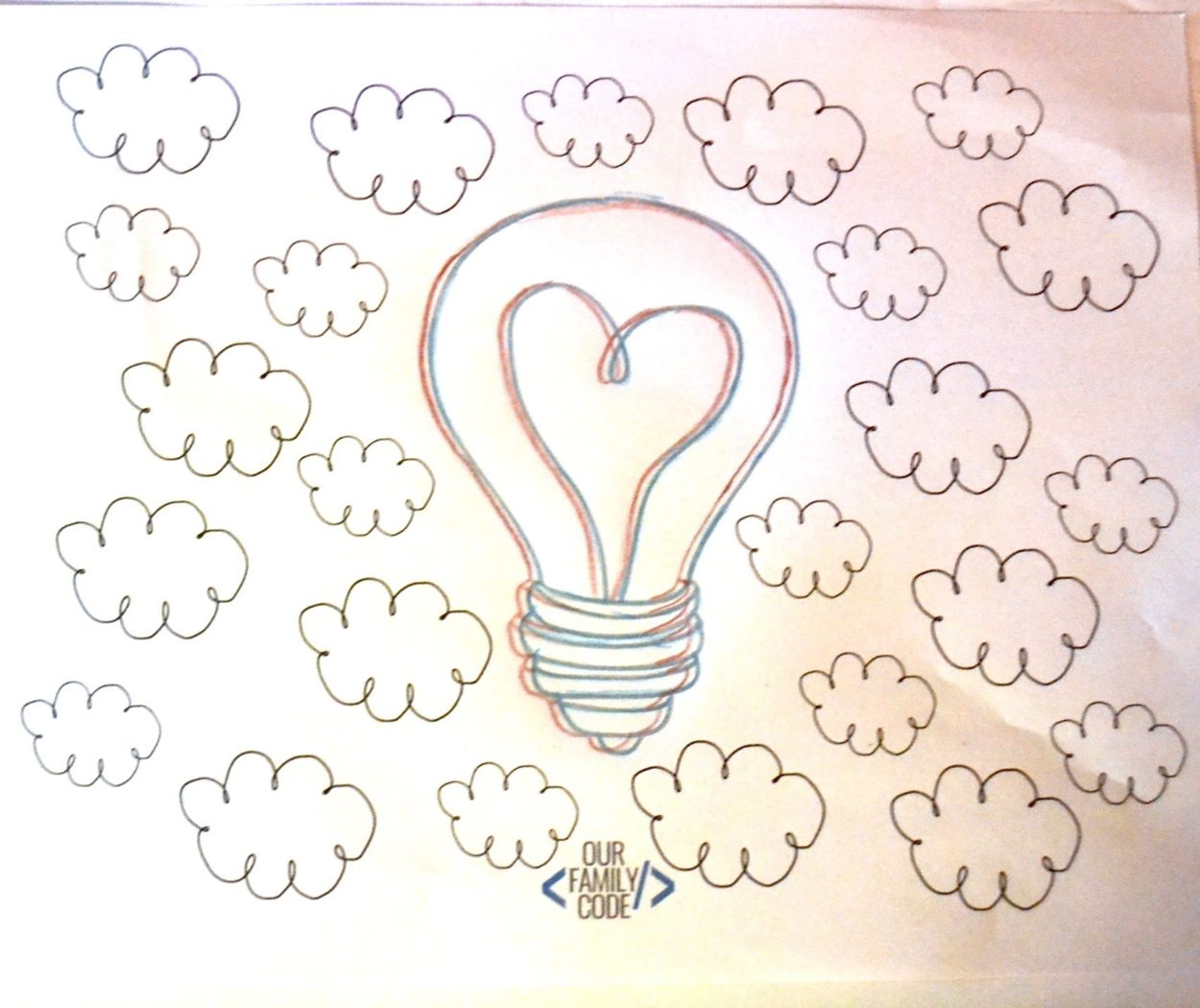
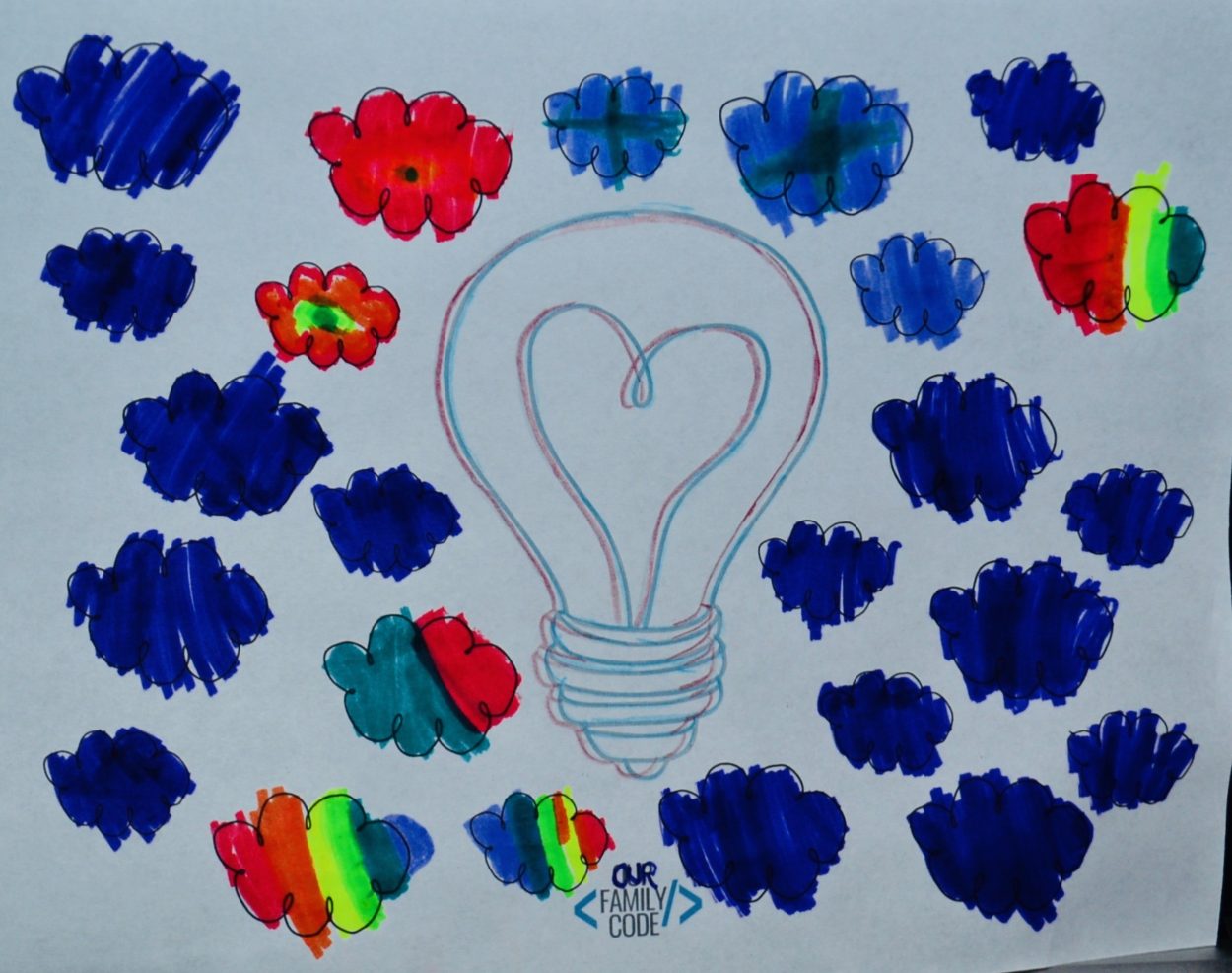
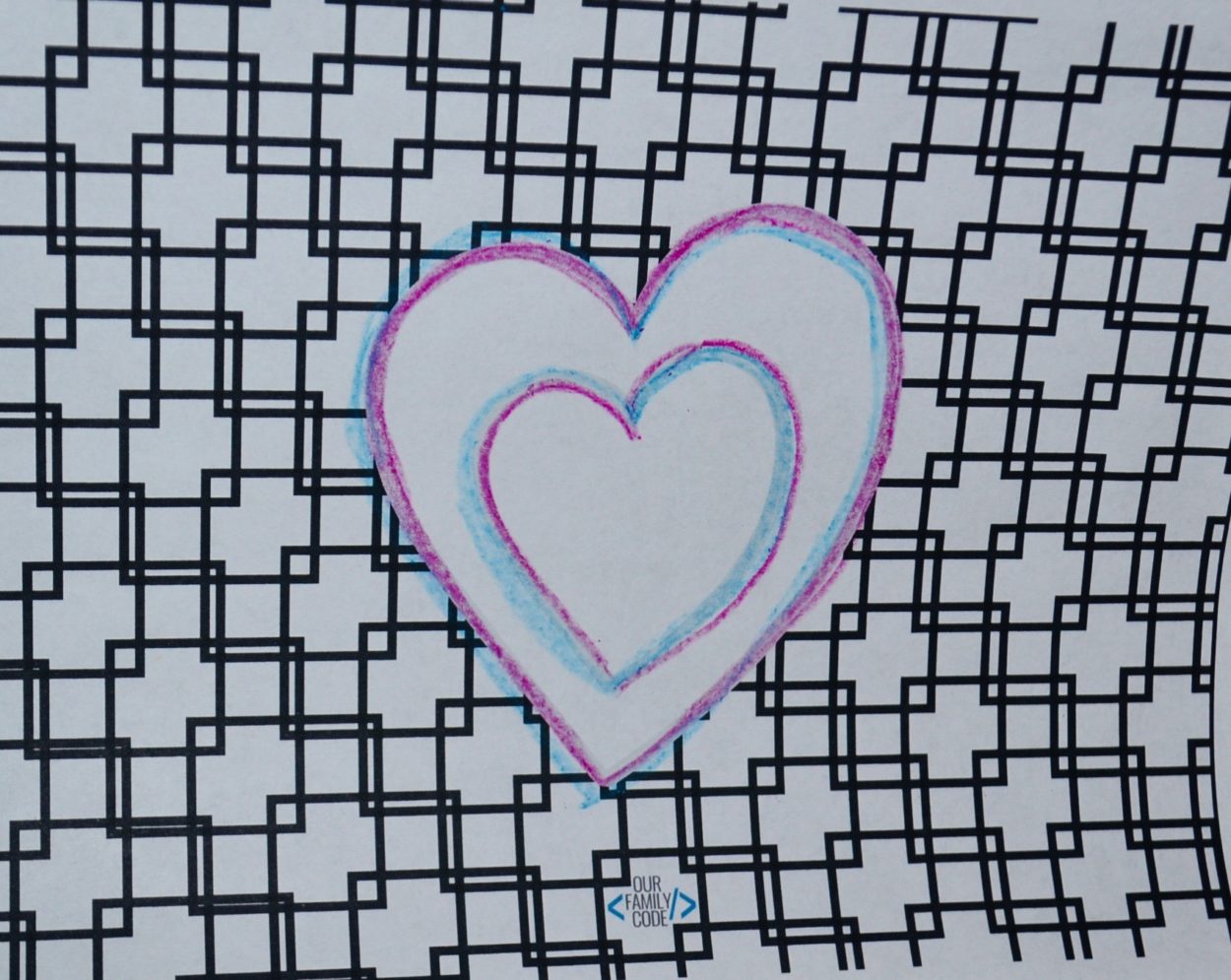
Adding Technology to Make Digital 3D Art
We decided to mix things up a bit and moved to technology to make some 3D art. Peyton, my fifth grader, grabbed some doodles and gave them a try.


We used cyan (#0000ff) and cerise (#ff0000) for our two colors. We had to employ stock images because this site is a commercial site, but yous can grab tons of doodles and transparent background (PNG) images from Google that yous tin use for personal use purposes.
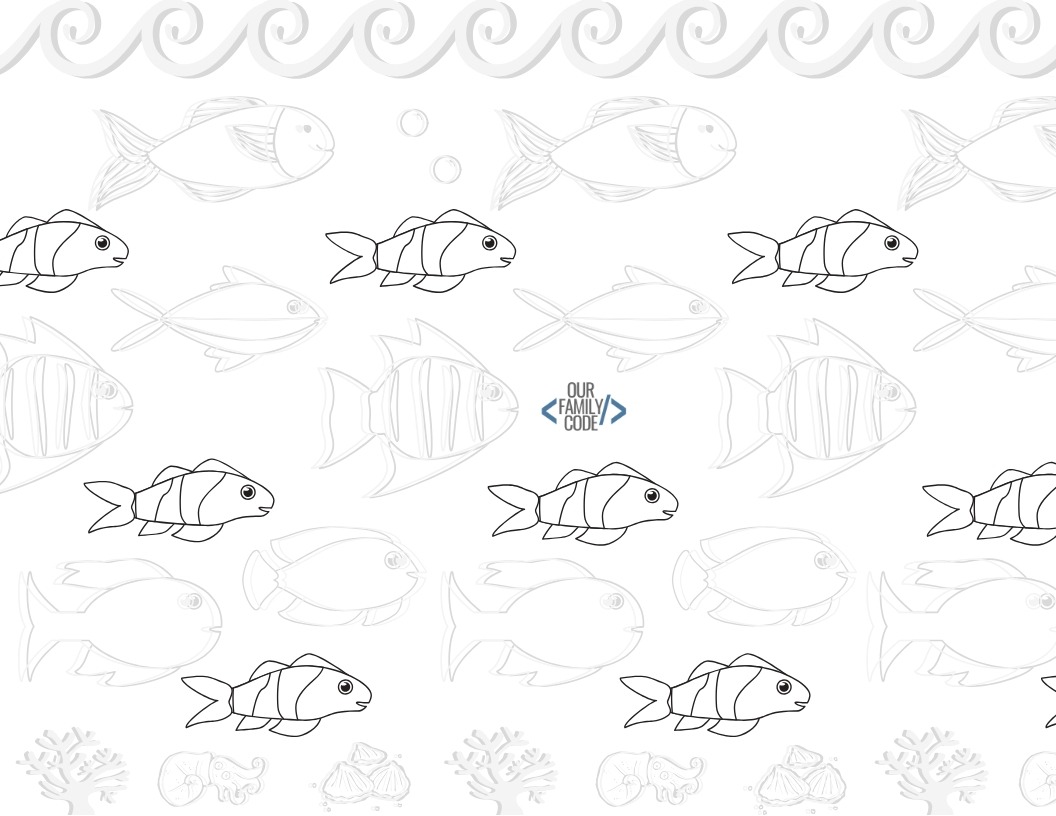

Peyton and I decided to make a 3D coloring book that Charlotte could do since she was all the same a little also young to understand the technology aspect of this activeness.


The Science Behind 3D Fine art
The cerise and blueish lenses of your 3D glasses mimic stereoscopic vision. The ruby-red lens of your 3D spectacles hides the red lines and the blue lens hides the blue lines of your 3D fine art.
The human encephalon sees these images and perceives the 3D structure due to the differences between them. How cool is that!?


Download Your Free 3D Coloring Book
This 3D art coloring book is a great way to learn about anaglyph 3D fine art. The book contains pictures that are slightly offset from one some other that can exist traced with red and cyan in order to create anaglyphs that can exist viewed with red blueish 3D spectacles.
The directions for the coloring book are pretty uncomplicated:
- The darker gray color is for red.
- The lighter grey color is for blue.
- Trace the red over the darker gray colour first then trace blue.
- Blue can overlap red, but information technology cannot overlap blue.
- The last two pages are for fun. Come across if you can trace the master gray line with red and then shift slightly for your blue line.
<<<CLICK Hither TO Download your free 3D Art Coloring Book>>>
Rock the STEAM Community Initiative
This activity was used as part of our Stone the STEAM community initiative. The Rock the STEAM Squad is dedicated to providing free monthly STEAM activities to families in local towns. We decided to boot off our STEAM dream in our own town of Stoughton, Wisconsin.
We claiming our readers and schools that visit our site to reach out to the community and utilize our gratis activities to spread STEAM learning opportunities to kids that might not have admission to these materials or lessons. To make it piece of cake, you can print lessons from our website that we've used for our Rock the STEAM initiative.
You tin also print this activity for your ain utilize also!
We exercise not give permission for this activity to exist sold or used for commercial purposes.
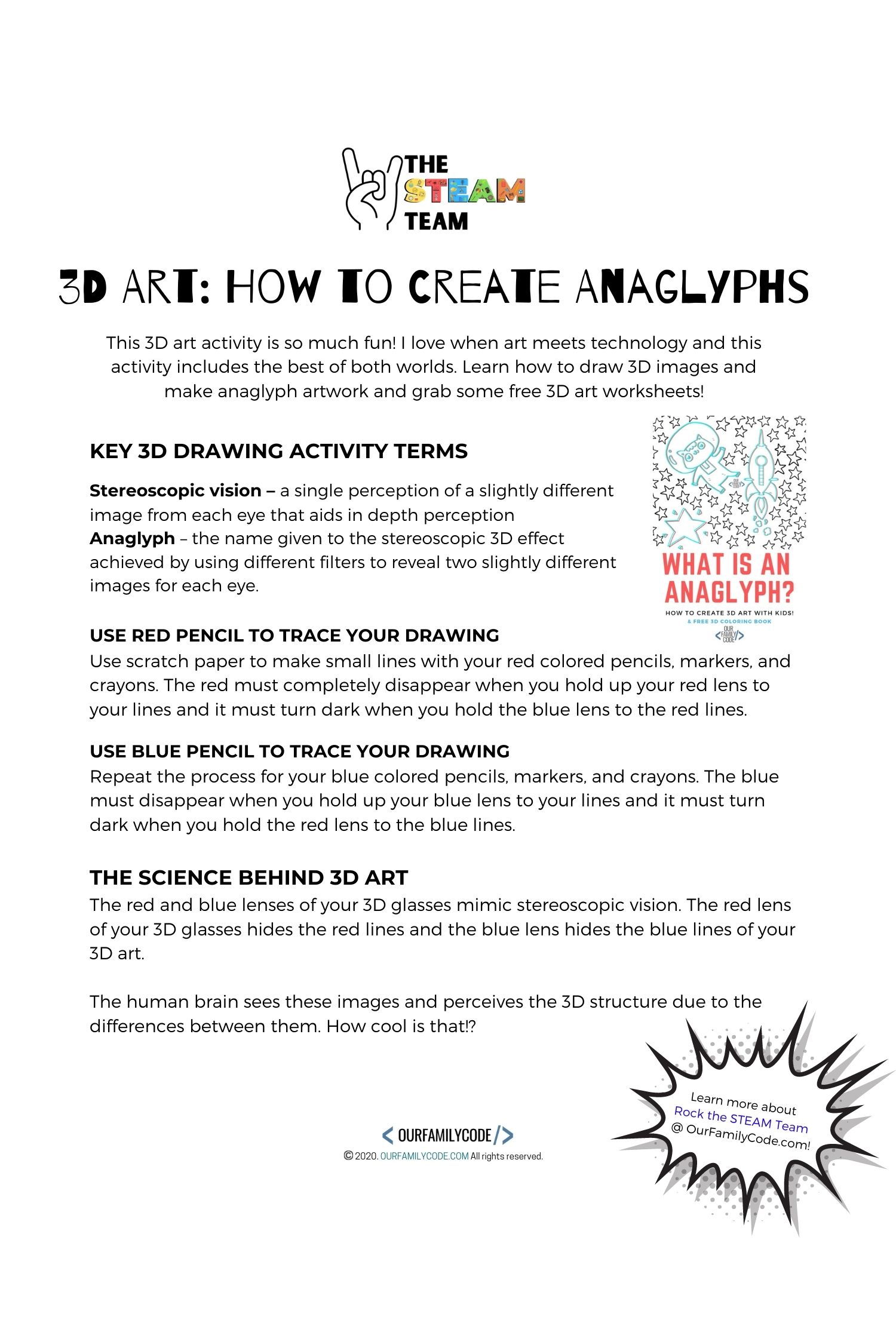
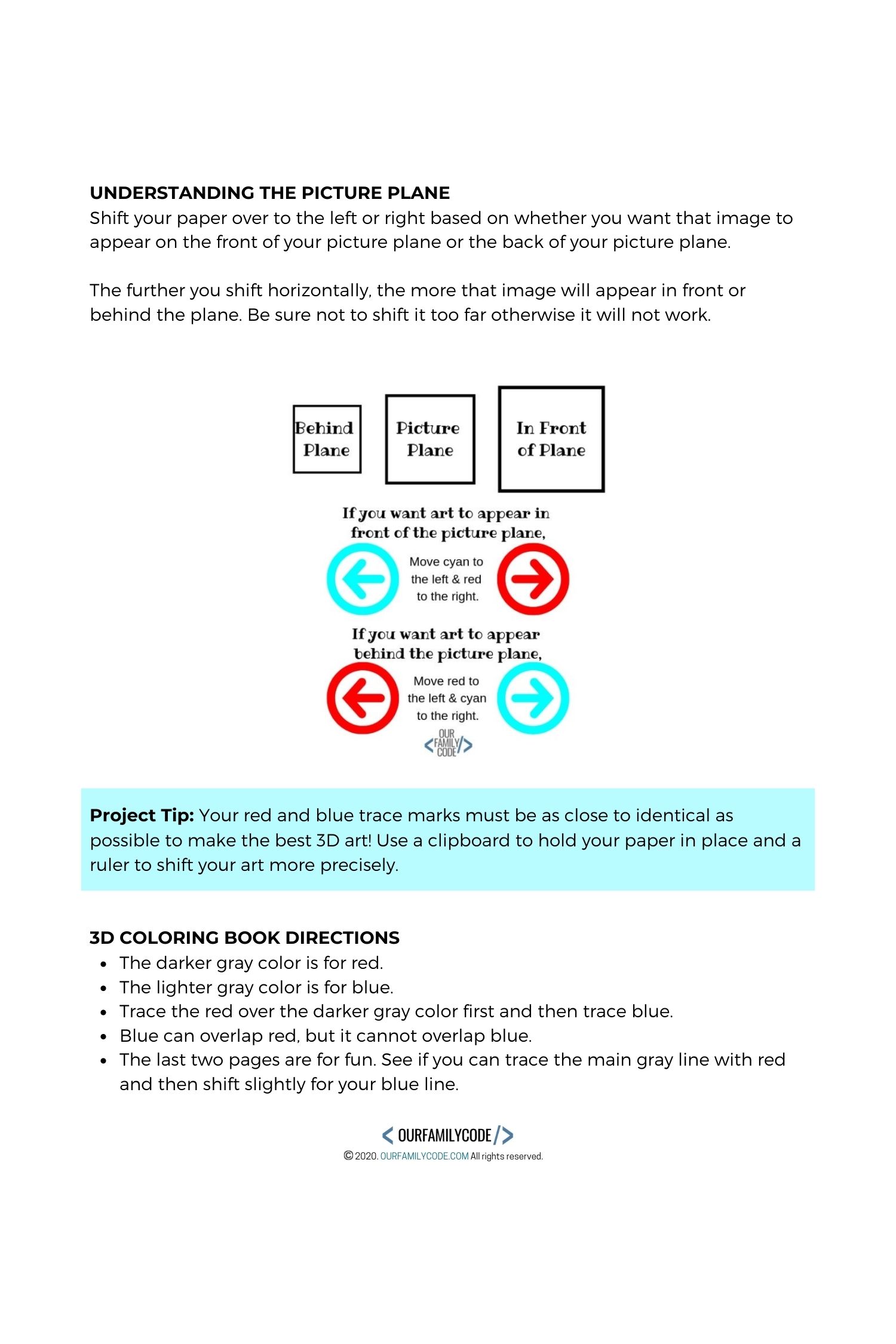
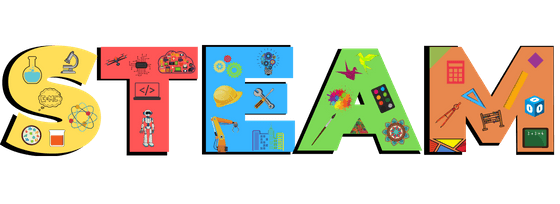
This 3D art action already includes Scientific discipline, Engineering science, and Fine art! Bank check out how to include other STEAM buckets!
Engineering – Make your own 3D spectacles! Yous tin admittedly make your ain 3D glasses using a clear plastic (like an erstwhile CD case) and some dry erase markers.
Math – Employ a ruler to measure the distance betwixt your ruddy and blue lines or use a ruler to make up one's mind how far you are shifting your paper to marker your blue lines. What distance produces the best results on your picture aeroplane? Hash out the differences.
Some Books to Read with Your Action
We love incorporating books into our activities. Here are some great books most fine art to read with your 3D art activeness!
- The Dot by Peter H. Reynolds
- Stalk Putter Book by Sumita Mukherjee
- Heaven Colour past Peter H. Reynolds
Frequently Asked Questions nearly Anaglyph Fine art
What is an anaglyph?
An anaglyph is a still moving picture that is made with two slightly offset identical drawing in contrasting colors (usually scarlet and cyan) to create a stereoscopic 3D effect when viewed through 2 correspondingly colored filters (like red blue 3D glasses)
What is Stereoscopic vision?
Stereoscopic vision is a single perception of a slightly different prototype from each eye that aids in depth perception.
How to Scarlet Blue 3D glasses piece of work?
The cerise and blueish lenses of your 3D glasses mimic stereoscopic vision. The ruddy lens of your 3D glasses hides the crimson lines and the blue lens hides the blue lines of your 3D fine art.

31 Days of Low-Prep STEAM Activities for Kids
This activity is role of our 31 Days of Low-Prep STEAM Activities for Kids. Every activity focuses on each of the buckets of STEAM (Scientific discipline, Engineering science, Technology, Fine art, & Math) although these integrated projects fit in more than than one bucket.
You and your kiddos are going to honey all of the activities that we take in shop! Visit the 31 Days of Low-Prep STEAM Activity hub and pin it, so y'all can come dorsum and visit it daily!
PIN THIS IMAGE TO SHARE THIS Low-PREP STEAM Action!
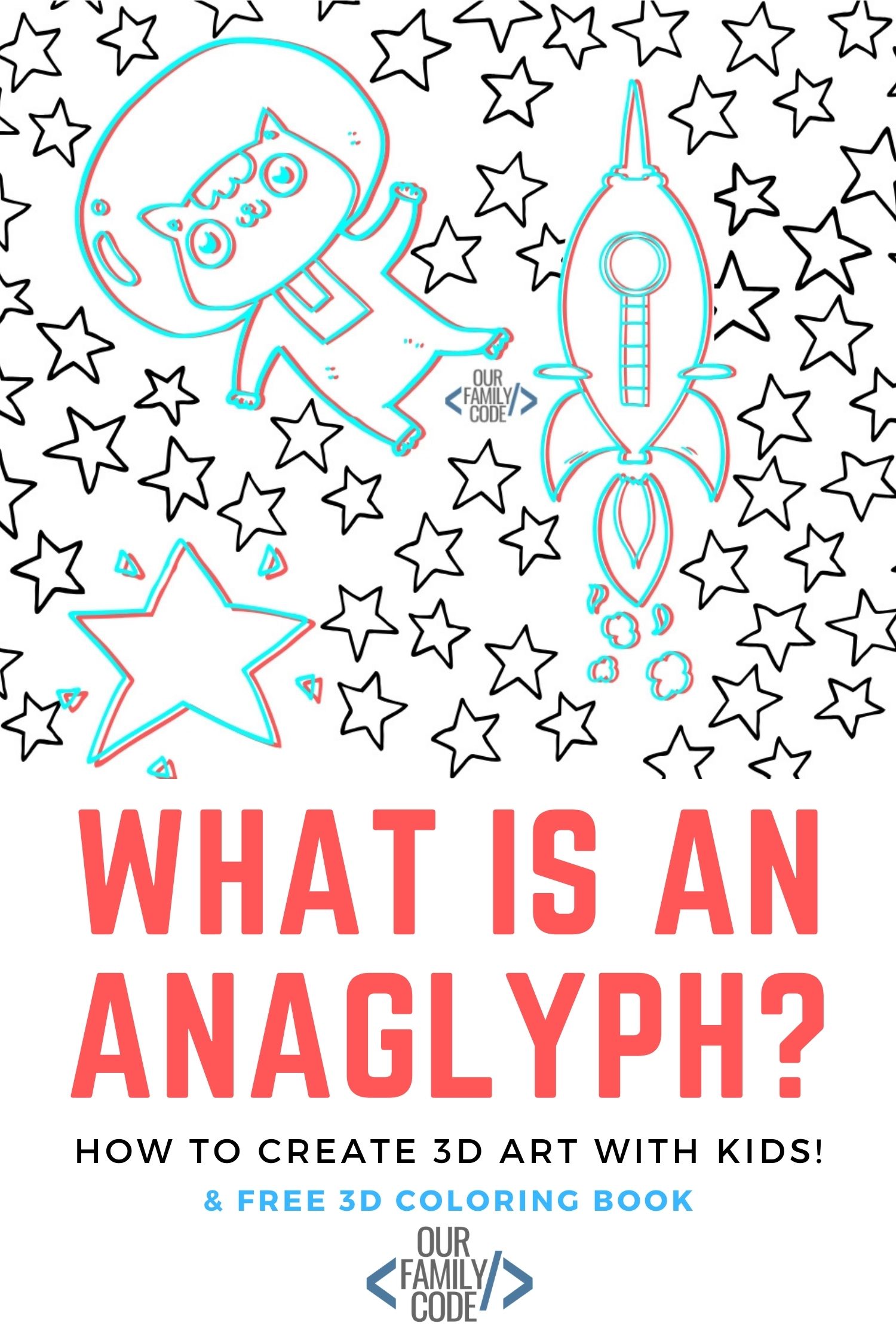
Common salt Painting: Larn about Absorption!
Learn about polar molecules and absorption with this table salt painting activeness! This is such an easy art project for kids with scientific discipline that is cracking for preschoolers through tweens!
How to Brand Constellation Art STEAM Activity
This constellation art action is neat for introducing constellations and sparking a sense of wonder for galaxies and planets to a higher place while as well helping kids to recognize patterns in the heaven by observing, describing, and turning them into art!
Plastic Bottle Collywobbles Recycled Art
Brand plastic canteen butterflies with this easy recycled art activity and learn about Monarch butterfly migration and how they find shelter and nutrient during their journey!
Encounter Toni, the Maker Mom behind Our Family Lawmaking

Hey there, I'yard Toni! I'm a Market place Research Analyst & Business Development Guru that finds my joy in unleashing my children'southward curiosity past exploring STEAM concepts with my fantastic 5!
When I'thou not chasing toddlers or raising tweens, you tin can detect me tearing things upwardly and putting them back together over here at Our Family Code.
I am the owner and content creator of multiple educational websites designed to increase access to STEAM & STEM didactics with a focus on teaching informatics and coding to kids of all ages!
Yous tin can likewise find out more than about me by visiting ToniGardner.com!
olivarezinesepark.blogspot.com
Source: https://ourfamilycode.com/3d-writing-steam-activity/
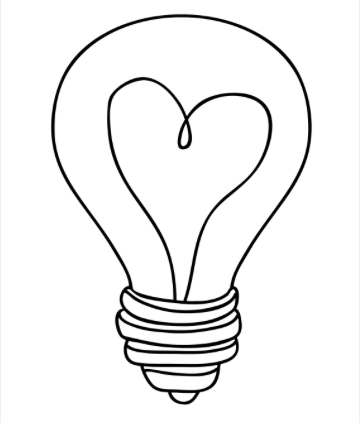
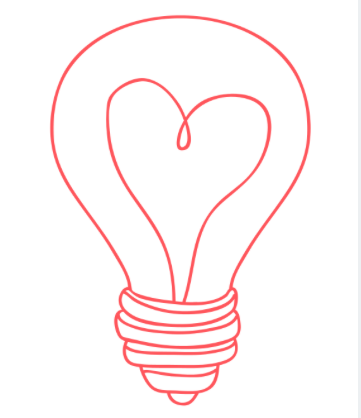
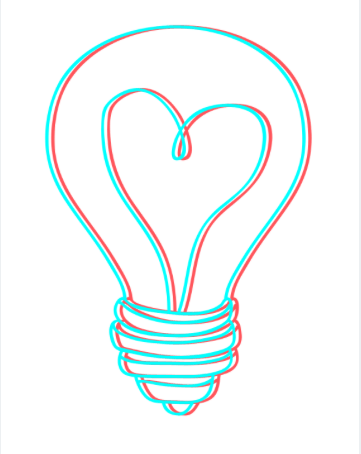
0 Response to "drawing 3d and 4d images on the computer"
Kommentar veröffentlichen